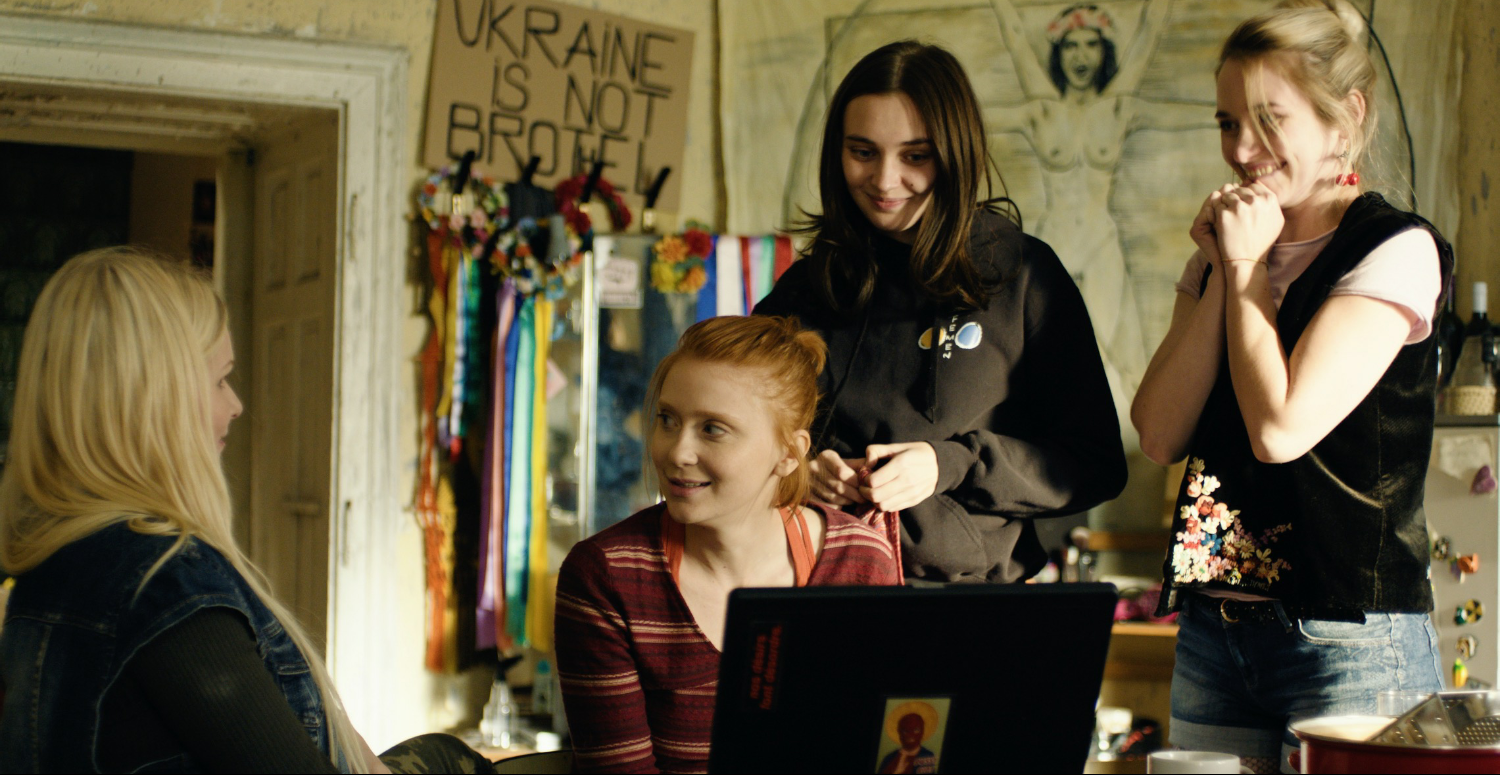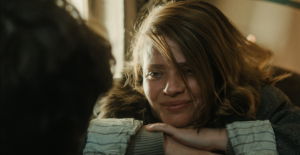Oxana
2025

FR EN
Si le mouvement des Femen est aujourd’hui connu de tous, l’on connaît finalement peu sa genèse, son message originel, ou la raison de cette iconographie qui a fait sa renommée. Alors qu’en 2003, l’Ukraine est l’Eden européen du marché de la prostitution, de jeunes militantes décident d’utiliser leur corps qui est regardé et convoité comme une arme à des fins politiques. Et si leur réorientation de l’utilisation du corps féminin a finalement été assez mal comprise à l’international, l’un des plus marquants nouveaux mouvements de liberté du XXIe siècle est néanmoins né et n’a pas tardé à dépasser les frontières de son berceau ukrainien …
Pour son second long-métrage (après le superbe « Slalom »), la réalisatrice française Charlène Favier choisit le genre du biopic pour raconter l’histoire de ce mouvement féministe, politique et artistique, à travers le grand destin romanesque de l’une de ses créatrices : Oksana Chatchko. C’est notamment à elle que l’on doit la mise en scène très théâtrale de leurs actions avec costumes, masques, couronnes, peintures, et le symbole des seins nus pour attirer l’œil sur leurs slogans et leur message. « Oxana » est ainsi un film qui rend hommage à ce mouvement qui a repensé le militantisme, et rend justice à son héroïne activiste, peintre et réfugiée politique pour qui le véritable art se trouve dans la Révolution.
C’est une œuvre militante sur la fin de l’innocence à travers la condition féminine et le poids du patriarcat qui conjugue histoire intime et contexte politique à travers le parcours d’un groupe qui prend conscience de sa force idéologique et la trajectoire d’une artiste qui se laisse dévorer par sa mission. C’est en effet un biopic non-linéaire déstructuré avec une double chronologie qui nous plonge certes dans la construction et la philosophie de ce groupe de militantes ukrainiennes dans leurs combats pour les droits des femmes et les libertés pour tous et contre les systèmes politiques et sanitaires du pays ainsi que les dictateurs Poutine et Loukachenko. Mais le film nous plonge aussi en parallèle dans une journée d’errance de son héroïne à Paris en 2018, devenue peintre exilée qui peu à peu s’évapore et se dissout en elle-même. Deux temps, deux lieux, deux tons et dynamiques en contrepoint qui se croisent.
Si le film porte le nom de sa protagoniste, ce n’est pas uniquement pour souligner sa dimension ‘biopic’, c’est bien qu’il cherche à incarner dans son fond comme dans sa forme toutes les facettes de son héroïne : activiste politique, jeune âme ambivalente, et artiste peintre. Elle qui peignait dans sa jeunesse des icônes pour l’Église, se retrouve dès lors à son tour sublimée en icône envoûtante, complexe et mystérieuse. De fait, c’est un film très pictural avec une image très travaillée de ses beaux plans à son magnifique travail sur les couleurs, en passant par de superbes reconstitutions de tableaux. Néanmoins il aurait pu plus jouer sur la force de ses images (notamment lors de scènes de dialogues trop explicatifs ou didactiques dont la mise en image aurait probablement plus résonné). Porté par de jeunes actrices ukrainiennes talentueuses (dont le casting s’est effectué en pleine guerre), « Oxana » est un film instructif et stylisé mais qui pâtit d’une structure ne rendant pas toute la force du récit à cette icône des temps modernes. On retiendra néanmoins ses messages ‘you are fake’ (à la fois destiné à un monde n’agissant pas assez face aux dictateurs, et à la trahison interne du mouvement) et ‘tout le monde peut être Femen’ !
Raphaël Sallenave
While the Femen movement is now universally famous, little is known about its genesis, its original message, or the reason for the iconography that has made it so successful. In 2003, when Ukraine was Europe’s Eden of the prostitution business, a group of young activists decided to use their coveted and highly sought-after bodies as weapons for political ends. And if their rethinking of the use of the female body was ultimately misunderstood internationally, one of the most striking new freedom movements of the 21st century was nonetheless born, and soon spread beyond the borders of its Ukrainian cradle…
For her second feature film (after the brilliant “Slalom”), French director Charlène Favier chooses the biopic genre to tell the story of this feminist, political and artistic movement, through the great romantic destiny of one of its creators: Oksana Chatchko. It was she who created the highly theatrical staging of their actions, with costumes, masks, crowns, paintings and the topless symbol to draw attention to their slogans and message. “Oxana” is therefore a film that pays tribute to this movement that has reconceptualized activism, and honors its activist heroine, painter and political refugee, for whom true art is to be found in the Revolution.
This is a militant film about the end of innocence through the condition of women and the burden of patriarchy, blending intimate story and political history through the journey of a group that becomes aware of its ideological strength, and the path of an artist who allows herself to be devoured by her mission. It’s a non-linear, deconstructed biopic with a double timeline that takes us into the building and philosophy of this group of Ukrainian activists as they fight for women’s rights and freedoms for all, and against the country’s political and health systems, as well as the dictators Putin and Lukashenko. But the film also takes us on a parallel journey of its heroine’s wandering day in Paris in 2018, now an exiled painter who gradually evaporates and fades into herself. Two times, two places, two tones and two contrasting movements that cross paths.
If the film bears the name of its protagonist, it’s not just to underline its biopic dimension, it’s because it seeks to embody in both substance and style all the facets of its heroine: political activist, ambivalent young soul and painter. She, who in her youth painted icons for the Church, consequently finds herself sublimated into a bewitching, complex and mysterious icon. In fact, this is a very pictorial film, with a beautifully crafted image, from its beautiful shots to its gorgeous color work and superb painting recreations. Nevertheless, it could have made greater use of the power of its imagery (particularly during scenes with overly explanatory or didactic dialogues, which would probably have been more striking if depicted visually). Led by talented young Ukrainian actresses (who were cast in the midst of the war), “Oxana” is an enlightening and stylized film, but that suffers from a structure that doesn’t fully convey all the power of this modern-day icon’s story. Yet we’ll certainly take away its inspiring messages: ‘you are fake’ (aimed both at a world that doesn’t fight dictators enough, and at the movement’s internal betrayal) and ‘anyone can be a Femen’!
Raphaël Sallenave

